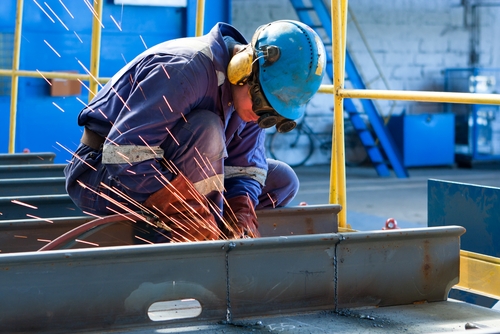
Technology has long played an important role in the development of workplace safety. While a common device by today's standards, radios enabled two-way communication and let employees call for help if need be. Heavy machinery is commonly built with safety features in mind. For example, some equipment is built with roll over protection systems and fall over protection systems, as well as anti-slip steps, according to Volvo Construction Equipment.
Such systems have been around for years now and have undoubtedly helped prevent potential accidents. With technology constantly improving, there are interesting methods and gadgets that have recently been unveiled, or soon will be, that will only help further enhance workplace safety.
 Wearables, such as safety glasses, can help workplace safety.
Wearables, such as safety glasses, can help workplace safety.3D visualization software
To help give employees an idea of their worksite, companies are utilizing 3D visualization software to help create lifelike images on a computer or television, according to PC Magazine. This software is beneficial, particularly if the illusion of depth is achieved. This is achieved by recording the same image but from two different angles. PC Magazine further said these images should be taken so as to correspond to the distance between the left and right eye.
While the costs may seem like an obstacle for some companies, this is the wrong mindset to develop. In an interview with Techcrunch, Intel's chief information officer, Kim Stevenson, said camera costs have been reduced in recent years. This will enable workplaces to successfully recreate the environments employees will find themselves in daily. This makes the notion of using 3D visualization to help train employees not as far fetched as it sounds.
According to Industrial Safety and Security Source, the oil and gas industries have been supportive of this technology because a lot of the work occurs at extreme depths. As a result, workers are being trained how to work in offshore and onshore environments. In an interview with ISS Source, FuelFX's CEO, Oliva Diaz, said 3D visualization can help companies understand and operate dangerous technology.
"It's about changing people's experience and situational awareness at work," said Diaz.
"Technology has long played an important role in the development of workplace safety."
Wearable technology
With smartphones reaching a level of stagnation, tech companies have been vying to figure out the next area ripe for innovation. As it currently stands, wearables are the new big item, with some of the largest and most well-known companies releasing smartwatches, with others exploring glasses with built-in cameras. Essentially, these devices act as an extension of a smartphone – information, such as upcoming meetings and important message, can be displayed on the small screen. Some even allow for voice calls, but in most cases, the smartwatch is not designed to replace a phone.
Even so, there are ways to incorporate wearables into the workplace, particularly regarding worker safety. These devices will ideally display information workers will find helpful. For example, some smartwatches monitor heart rate. It is not too crazy to picture employees receiving a notification that they're overworking themselves and need to relax for some time.
IndustryWeek highlighted a pair of eyeglasses that are far more advanced and suitable for the work environment. According to the publication, the wearables can track biometrics, enable video and voice calls and present a minimal heads-up-display that can also scan barcodes.
However, companies will have to conduct thorough research before committing to wearables. Concerns will center around potential distractions. For example, glasses and smartwatches might distract a worker's line-of-sight, if only for a few seconds. Wearables are still a relatively new field and as a result, manufacturers and industrial companies are still figuring out how to best apply this technology.
Two areas of technology, wearables and 3D visualization, may help improve workplace safety even more. However, companies will have to make sure such advanced areas will fit into their company and not cause potential employee harm.








